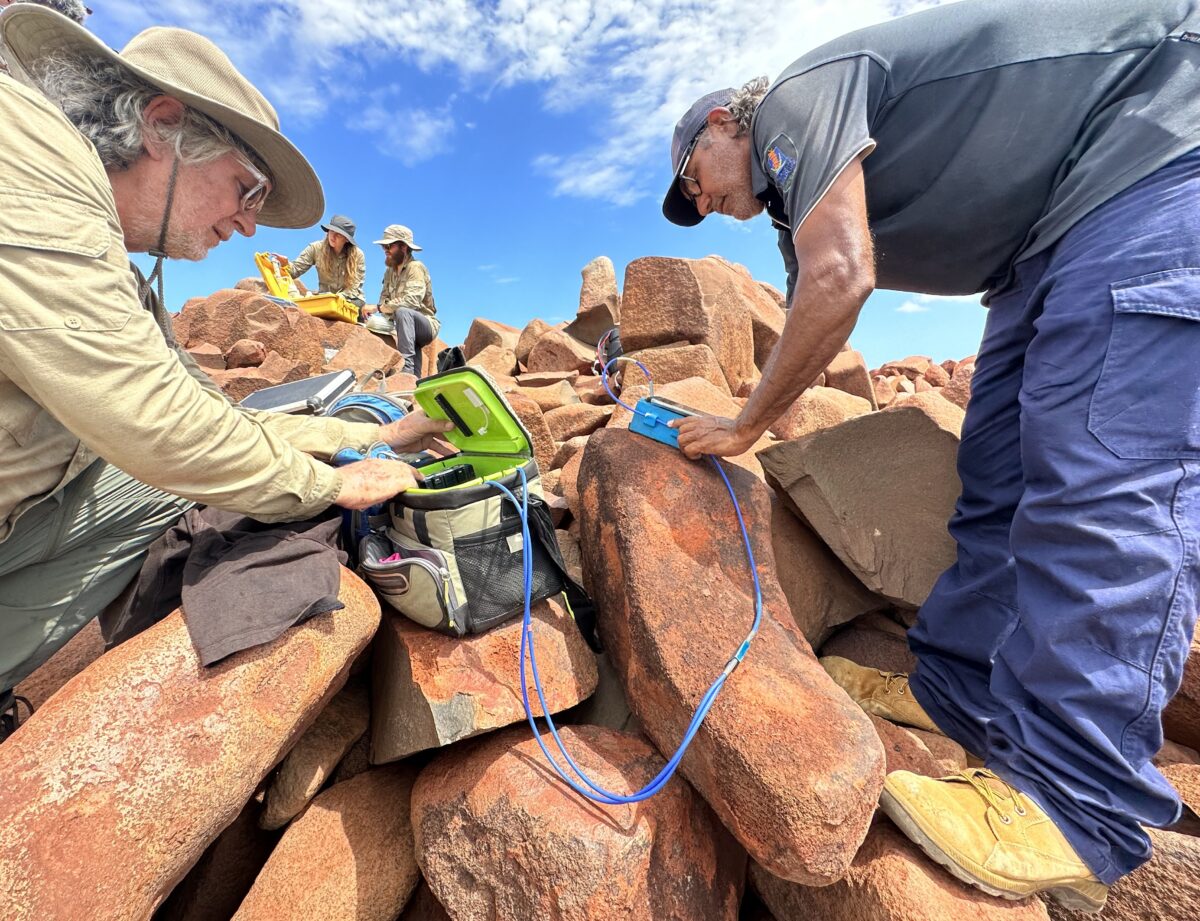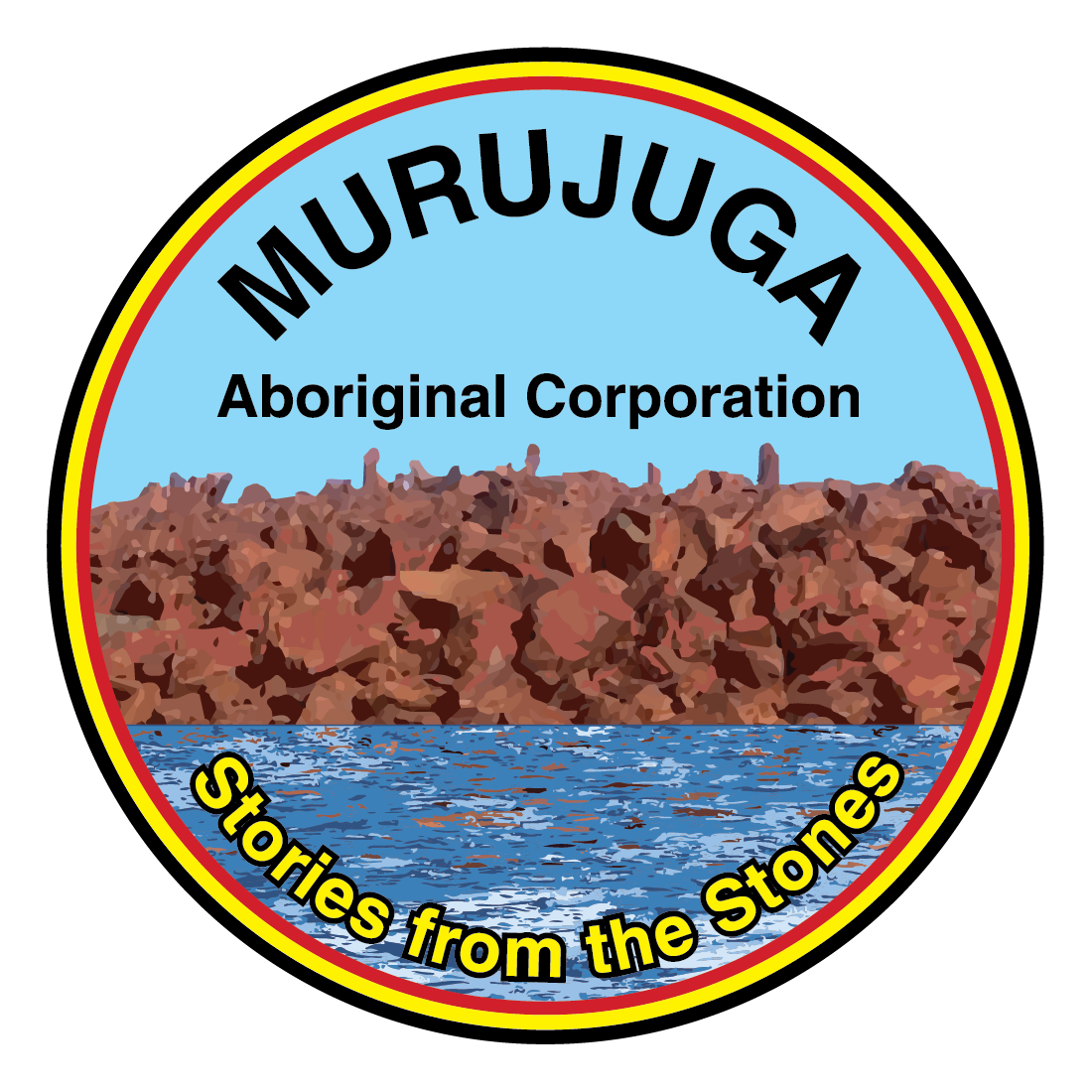
The most extensive scientific study to date to examine the impact of industrial air emissions on the rock art engravings of Murujuga, today released a report on results from the first year of field and laboratory research.
The Murujuga Rock Art Monitoring Program, led by Murujuga Aboriginal Corporation (MAC) in partnership with the WA Department of Water and Environmental Regulation (DWER), is investigating all plausible scenarios associated with air pollution from human activity that could cause degradation of the rock art.
Data collected by the Program – including air quality; rock art and rock condition; spectral (colour) measurements of rock panels, electrochemical and elemental measurements and analysis of microbial samples from rock surfaces – will be used to develop air quality standards applicable to the protection of rock art.
MAC Chief Executive Officer Kim Wood welcomed the technical report and its endorsement by the Murujuga Circle of Elders and MAC Board this week.
“The environmental management framework being developed through this monitoring program will inform future stewardship of the area and help ensure that natural weathering of rock engravings is not accelerated by human activity,” Mr Wood said.
“This is arguably the largest rock art monitoring program ever undertaken in the world and the results are being analysed to the highest standard of scientific rigour to ensure they are defensible. This is standard, internationally accepted scientific process.”
MRAMP scientific lead, Curtin University Professor Ben Mullins, said geochemical studies had identified important compositional and structural trends in the rock surface.
“Detailed quantitative statistical analysis of the results is ongoing; however, these studies appear to be a promising source of information to fully understand the system and processes occurring at Murujuga,” Professor Mullins said. “The monitoring program is progressing according to globally-recognised scientific processes.
“This means that when it is time to draw conclusions we will have full confidence that the findings can withstand scrutiny.”
Murujuga Rock Art Stakeholder Reference Group Chair Professor Stephen van Leeuwen said every aspect of the MRAMP had been respectfully co-designed and guided by the Murujuga Circle of Elders, who also provide cultural guidance to MAC, the corporate body representing Traditional Owners and Custodians of Murujuga.
“This report shows that the monitoring program is collecting solid and comprehensive evidence,” Professor van Leeuwen said.
“Spatial trends have been observed for some air pollutants to date, but longer-term data is still needed.
“The Murujuga Rock Art Monitoring Program will ensure that decisions regarding the protection of the rock art are based on the best available science.
“The fieldwork on Murujuga was conducted by a team of scientists and MAC Rangers, and is building the capability and skills of the Rangers who will have an ongoing role in monitoring the rock art and air quality beyond the current five-year program.”
Photo (credit: Murujuga Aboriginal Corporation): Fieldwork underway in March 2023 for the Murujuga Rock Art Monitoring Program. Art conservator Andrew Thorn and Rock Art Ranger Glen Aubrey take spectrometry measurements in the foreground while Curtin University researchers Francesca Cary and Stefano Tenuta sample for chemical residues on rock surfaces.
Notes to media:
Download the full first-year technical report and a summary report here: https://murujuga.org.au/our-land/rock-art-strategy/
Further documents relating to the first-year report and Murujuga Rock Art Monitoring Program are available here: www.wa.gov.au/murujuga
Photos and video footage of the MRAMP field work and rock art are available from MAC on request.
Media are strongly encouraged to contact MAC before publishing images of Murujuga rock art that they have not sourced from MAC to avoid publishing culturally restricted and incorrect images. This invitation particularly applies to outlets publishing articles sourced from news wire services.
For more information, email: communications@murujuga.org.au.
